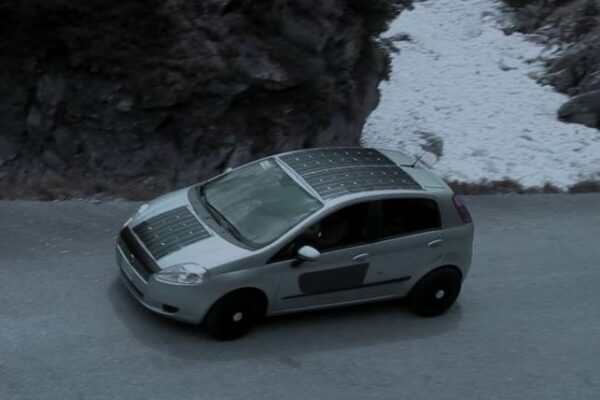
Italian startup wants to speed up transition to EVs
Currently prototyped and tested on a FIAT Punto, the hybridization kit consists of two in-wheel motors replacing conventional passive rear wheels, flexible photovoltaic panels mounted on the roof and the car bonnet, a battery and some control electronics.
Lead project researcher and professor at the Industrial Engineering Departement of Salerno’s University, Gianfranco Rizzo says the prototype served as a proof-of-concept to study the upgrade feasibility from ICE to hybrid vehicles and to work on the control algorithms.
Together with research partners, he has set up the startup EProInn (short for Energy and Propulsion Innovation – www.eproinn.com) and is now seeking funding through the Equity Crowdfunding platform Assiteca Crowd to produce and commercialize the kit.
The spin-off company is also looking at a possible partnership with Landi Renzo SpA, a company that designs and sells Liquefied petroleum gas (LPG) and Compressed natural gas (CNG) alternative automotive fuel systems and components and whose distribution network could give a boost to EProInn’s visibility.
Initial tests have shown that during sunny days, the on-board photovoltaic panels can contribute up to 30% of the overall energy requested for vehicle traction, when vehicles are used for approximately one hour per day in urban areas (all this without relying on a lagging EV recharging infrastructure).
This has two effects on the ICE car, reducing fuel consumption and emissions while improving performance thanks to the added traction.
Currently, the hybridization kit sports 18% efficient flexible single-crystal silicon HF65 photovoltaic panels manufactured by Enecom, adding to the car about 270W of solar power. But Rizzo is confident that by the time the kit matures to a full production run, he’ll be able to choose more efficient solar panels at decreased costs.

The researcher has published several papers on the optimization of power distribution across the four wheels, correlated with the driver’s behaviour.
Together with his colleagues, he developed a mathematical model for the real-time identification of the active gear, using only data measured by the On Board Diagnostics (OBD) port to effectively detect the driver’s intention (based on pedal position, vehicle speed, engine speed and other variables) and deliver the appropriate torque to the rear wheels.
"We don’t enter the vehicle’s ECU because we don’t want to invalidate the manufacturer’s guarantee, but we use fuzzy logic to interact with the vehicle’s management unit. We also plan to apply ABS to the rear wheels and in principle, the vehicle’s stability could be improved".
The kit will be priced to be on par with the typical difference between today’s ICE and hybrid vehicles, around 3000 euros. The investment payback for consumers is estimated to be within 3 to 4 years for the hybrid configuration but could be shortened when using the plug-in option (recharging from the grid).
"The good thing is that you could make your vehicle greener without having to buy a new and more expansive one" emphasized Rizzo. After the retrofit, your ICE car may even qualify as a hybrid under new legislations that restrict the circulation of conventional cars in some cities during carbon emissions peaks, hopes Rizzo.
In principle, the kit could be sold B2C, directly to consumers, but preferably, Rizzo would want to license the IP for car manufacturers to integrate the hybridization kit at the end of their manufacturing line.
"This would allow for a better integration and a better optimization of the fuel saving modes" he expects.
More about the HySolarKit at www.hysolarkit.com
 If you enjoyed this article, you will like the following ones: don't miss them by subscribing to :
eeNews on Google News
If you enjoyed this article, you will like the following ones: don't miss them by subscribing to :
eeNews on Google News




